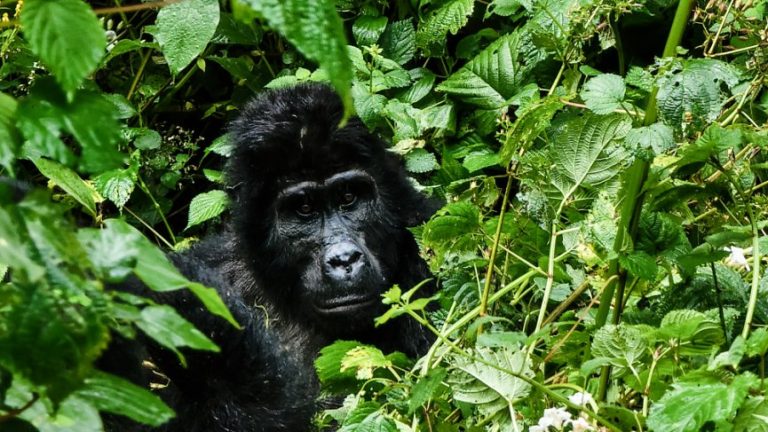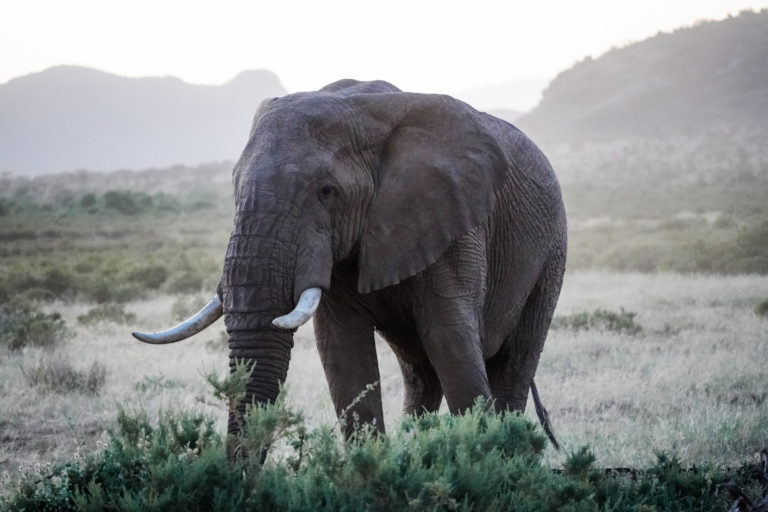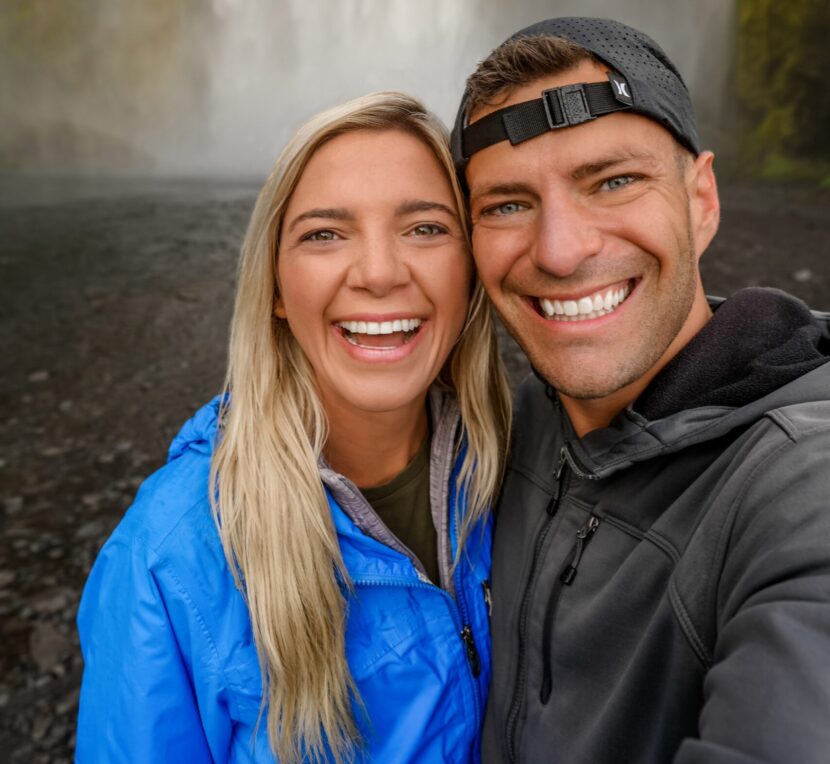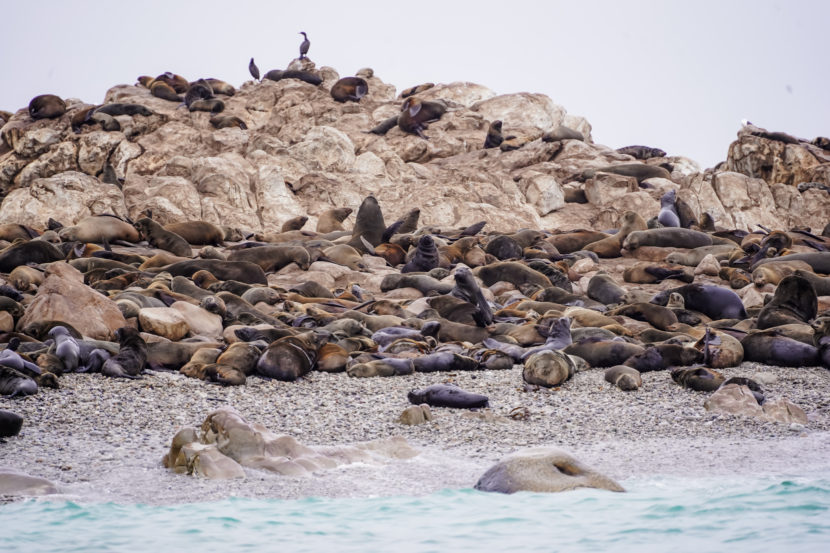
Cage Diving With Great White Sharks
One of the top things on my bucket list has always been to cage dive with great white sharks! Seeing these massive sharks out in the wild is the only way to see them in person. And since I’m still a little too scared to take my chances with them alone in the open ocean, cage diving is the perfect way to get up close while still being 100% safe.
Great white sharks are one of the most impressive animals of the ocean! At 20+ feet in length and 6,600 lbs, they are the largest predatory sharks in the world! These sharks have up to 20,000 serrated teeth in their lifetime that can grow more than 6 inches in length. Even though great whites weigh more than 3x the weight of an average car, they can propel their entire bodies out of the water in pursuit of their prey!
South Africa is one of the best and only places in the world to see great white sharks. At one point, Gansbaai – a fishing town just two hours away from Cape Town – was named the “Great White Shark Capital of the World” because it had the largest concentration of great whites in the world. It is also home to the famous “Shark Alley.” These enormous sharks are some of the most fierce, yet misunderstood ocean animals. When I think of great whites, I usually think of ruthless sea monsters that rip apart anything and everything in sight. Movies usually show great whites eating people like a light snack. However, the reality is that sharks in general do not usually attack humans. On average sharks only account for 5-6 deaths a year. In comparison, hippos cause 3,000 deaths, dogs 25,000, snakes 100,000, and mosquitos 750,000+. However, even though I know that they aren’t the vicious killers that are shown in movies, there’s still something a little scary about being so close to great whites!
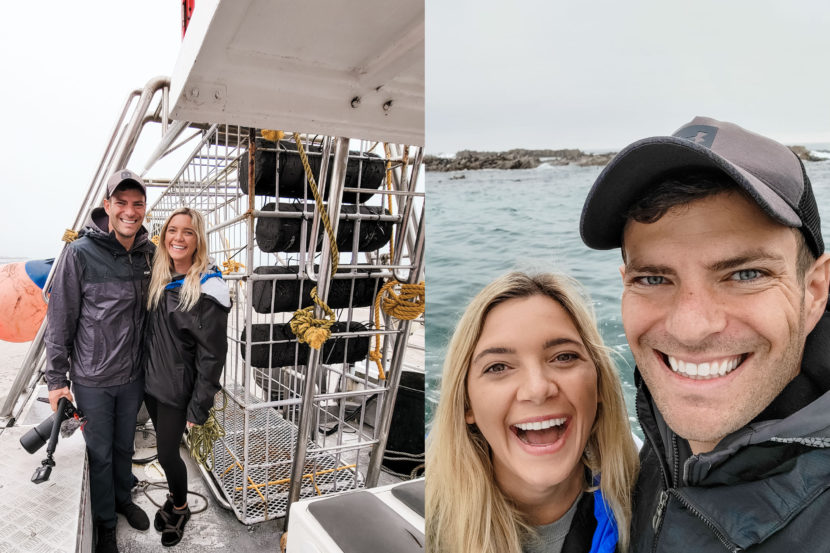
We went cage diving with White Shark Projects, which is located right in Gansbaai – the “Great White Shark Capital of the World!” White Shark Projects has an incredibly knowledgeable team, and what also stood out to us is their care for the community and conservation. The company runs a “Recycle Swop Shop” where local kids can swap their recyclable materials and redeem prizes from the shop. This helps teach kids how to recycle as well as provide supplies for more disadvantaged communities. At White Shark Projects’ offices and shops, the company practices environmentally friendly practices every chance. Jessica, one of the owners, is so incredibly inspiring and showed us how the company is striving to go completely plastic free wherever possible – from using glass jars in the kitchen, to swapping out one-use plasticware. Plastic that the company does use is often donated and used in eco bricks, which are used for projects around the community! Wherever possible, White Shark Projects has tried to limit their environmental impact and give back to the local community. It was a really special opportunity getting to meet people who are so passionate about what they do and helping others.
We heard about White Shark Projects through Xplore Cape Town, which offers incredible experiences all around Cape Town. In addition to shark diving tours, Xplore also offers whale watching, Big 5 safaris, wine tours, city tours, and a Garden Route tour – which is at the top of the list for our next visit to South Africa!
It was a weird feeling going out into the ocean actually hoping to see some sharks. Usually that’s the last animal that I want to see in the open water, but today we were with the experts and were excited to look for one of the fiercest animals in the ocean. The weather was cool, and the water was even colder! Fortunately, White Shark Projects provides very thick wetsuits, hoods, and boots to help keep their guests warm in the water. We headed out into the ocean close to the shores of the famous Dyer Island and iconic Shark Alley to see if we could spot some sharks! Mary, the marine biologist onboard, taught us all about white sharks and their habits. (That’s pretty much how I know ¾ of the facts about sharks that I wrote in this post!) It was great getting to learn from an expert about these incredible sharks.
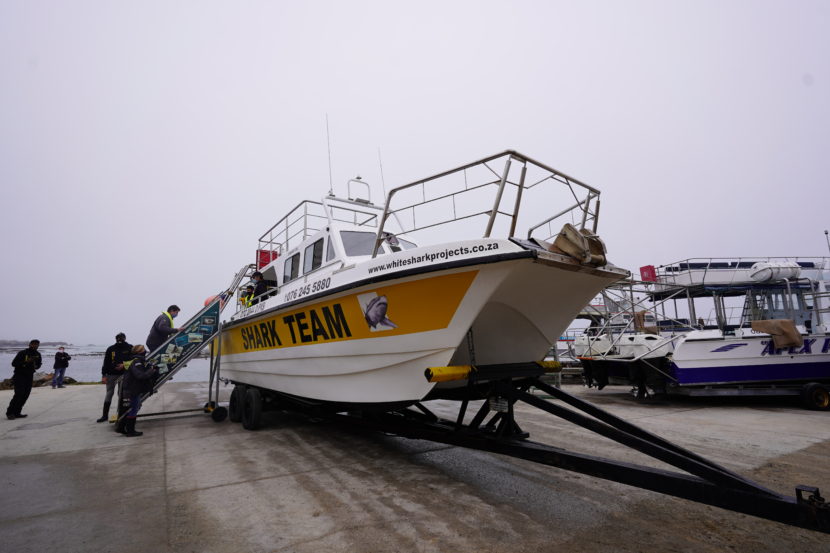
One of the reasons why this area is a world famous hotspot for sharks is because of the 50,000 cape fur seals that call Dyer island home. Shark Alley is a thin strip of water that runs between Dyer Island and Geyser Rock. It is like a fast food buffet for great whites looking for a tasty seal snack. This area is where a large amount of white shark documentaries have been filmed because it was once home to the largest great white shark populations on earth! The cape fur seals were so friendly and fast. The seals in the water kept diving up and down, doing somersaults underwater, and seemed to be showing off as we floated by!
In 2017, two orcas nicknamed “Port” and “Starboard” started hunting great whites off the coast of South Africa. Great whites are fierce, but are not used to having predators. At 10 feet longer, 7,000 lbs heavier, and 5 mph faster at swimming, the great white shark is no match for the aptly named “killer whale.” In 2017, a combination of new predators, increased fishing, and changing climate in the area, the great whites started to venture out into deeper waters. Fortunately, earlier in 2021 the great white shark sightings in Gansbaai started to increase! In addition to great whites, another popular shark to see in the area are bronze whaler sharks. They are nearly the same length as great whites, but are not quite as stocky. During our boat trip, we unfortunately didn’t spot either a great white or bronze whaler, but it was still worth the boat ride to see the famous shark alley and 50,000 friendly seals! This is definitely at the top of our bucket list for things to do again when we hopefully come back to visit Cape Town someday.
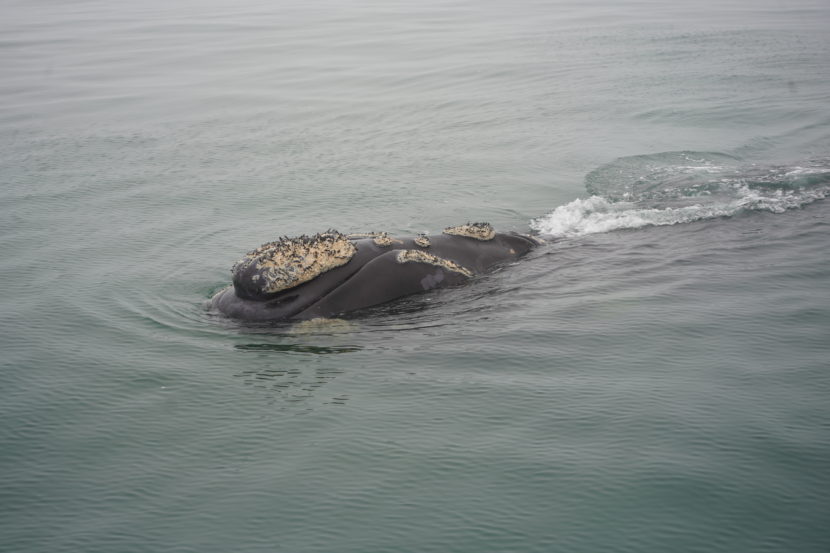
Southern Right Whale Watching
Whether you are a shark lover or not, Gansbaai is a definite must-visit location because it is also one of the best places in South Africa to go whale watching! After our shark tour, we headed out on another boat with the company called Ivanhoe Sea Safaris to spot some whales! Within just two hours on the water, we spotted a Bryde’s whale, bottlenose dolphins, and southern right whales! It was by far the best whale watching tour we have ever experienced. The first whale that we spotted was the Bryde’s whale. These whales can be found all year round in this area. This whale was on the move and quickly dove under the water and disappeared into the fog. Next we spotted a pod of bottlenose dolphins. They were so friendly and playful and continually kept swimming right up to the boat as if to say hello. Every once in a while, we would come across some cape fur seals or African penguins swimming by themselves in the ocean. Although they are extremely common in this area, I’m still not used to seeing wild penguins float by! But everytime I would try to snap a photo, the penguins would dive back under the water and out of sight. Lastly, we saw some massive southern right whales. At 50-60 feet in length, these whales are among the longest species of whales in the world. But weighing up to 100 tons, the southern right whales are the 2nd heaviest whales after the gigantic blue whale.
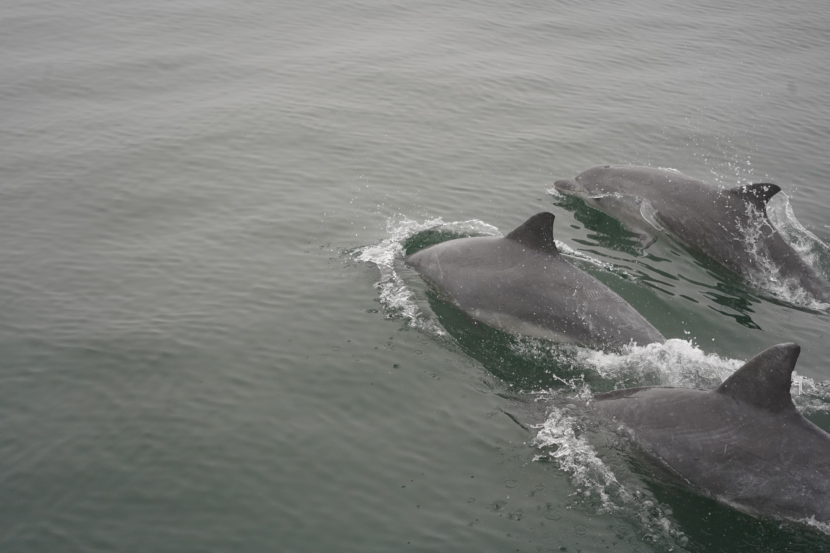
I never thought we would get so close to such a massive animal. We came across some mating whales that ended up coming right past our boat several times! It was amazing seeing these massive animals up close. We could see the barnacles and “whale lice” stuck to the whale’s heads up close. (If you ever want to see something really interesting and kind of gross, Google cyamids or “whale lice!”) The southern right whale is so uniquely shaped that I often had difficulty telling what was the top and bottom of his head. This was definitely our favorite whale watching experience and I’m not sure we could get much better!
The company that we went with was Ivanhoe Sea Safaris. They told us that they usually have success in spotting whales on almost all of their whale watching tours during the right season. They operate out of Area 6 in Walker Bay, which is one of the best southern right whale watching areas. Our whale guide was extremely knowledgeable about all things whales and ocean wildlife. She even showed us a piece of whale baleen that the southern rights use to sift their food, a part of the whale’s skin, and one of the cyamids or “whale lice” that live on the whales. From start to finish, we had an incredible time. It was definitely worth the few hours drive from Cape Town to see these amazing animals!

